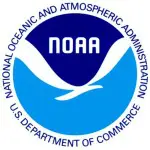Social Indicators Project
A NOAA Coastal Management Fellowship Project in collaboration with the New Hampshire Coastal Program (NHCP), Great Bay National Estuarine Research Reserve (GBNERR), Plymouth State University (PSU), and the Piscataqua Region Estuaries Partnership (PREP), an EPA National Estuary Program housed at the University of New Hampshire (UNH).
The Project
The Social Indicator Project was a two-year effort to establish a process to integrate social indicators into existing measures of health in New Hampshire's coastal watersheds. NOAA defines social indicators as numerical measures that describe the well-being of individuals or communities. They are used to describe and evaluate community well-being in terms of social, economic, and psychological welfare. The overall goal was to explore human well-being from an ecological perspective and incorporate this perspective into management decisions. This project was fundamental to understanding and linking social and behavioral data to regional environmental indicators so managers and stakeholders can collaborate effectively to protect coastal ecosystems and sustain high local quality of life. PREP debuted three preliminary social indicators in the 2018 State of Our Estuaries report alongside the existing ecological indicators.

The Need
New Hampshire's 1,000 square mile coastal zone is showing signs of stress in its water systems. This stress stems from population increases and development, as well as intensifying weather events coupled with land use policies inadequate to manage impacts of anthropogenic and natural stressors. To effectively manage this complex socio-ecological system, the management community must expand current monitoring efforts. Tracking ecological data only tells half the story; collecting social data sheds light on how people engage coastal ecosystems and highlights values crucial for affecting behavior change.
PREP and its Technical Advisory Committee have provided the greater Piscataqua Region watershed with data regarding water quality and overall environmental health since its inception in 1995. These data are released in the State of Our Estuaries report every five years. In previous reports, monitoring efforts have been primarily focused on indicators measurable by quantitative, ecological data collection. To better reach communities and partners involved in implementing solutions, an ongoing understanding of their values, knowledge, awareness, and concerns regarding these ecosystems is needed. Analyzing social data provides this insight.



